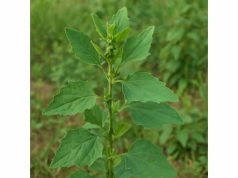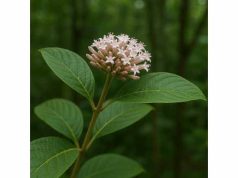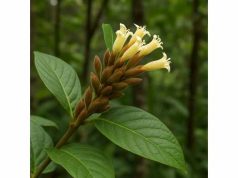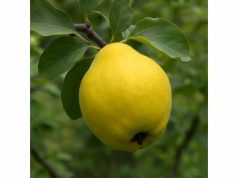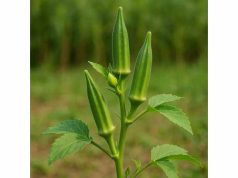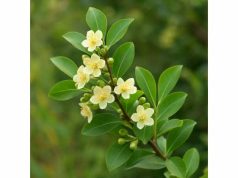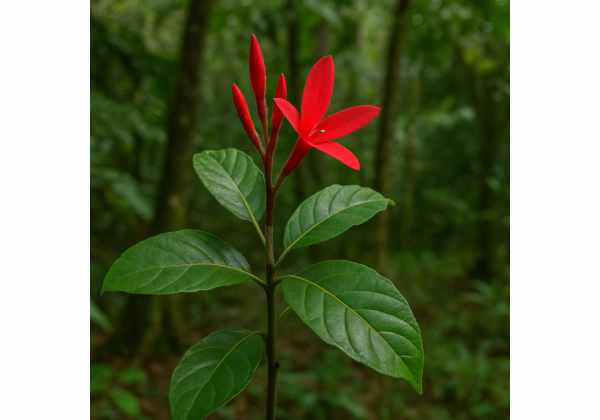
Quassia is a highly valued botanical known for its intense bitter flavor and its extensive use in traditional medicine. Revered by indigenous communities and increasingly researched by modern science, this herb is prized for its ability to stimulate digestion, support healthy metabolic processes, and provide anti-inflammatory and antimicrobial benefits. The primary active compounds, known collectively as quassinoids, work synergistically with other phytochemicals to promote overall wellness. Quassia is used in a variety of formulations—from bitters and tonics to topical applications—making it an integral component in natural healing practices and integrative health regimens.
Table of Contents
- Detailed Botanical Overview and Identification
- Comprehensive Phytochemical Profile and Active Constituents
- Holistic Health Benefits and Therapeutic Attributes
- Practical Uses and Safety Guidelines
- Research Insights and Notable Scientific Findings
- Frequently Asked Questions about Quassia
Detailed Botanical Overview and Identification
Quassia belongs to the Simaroubaceae family and is most commonly represented by species such as Quassia amara. Known as “bitterwood” due to its remarkably bitter taste, this deciduous shrub or small tree thrives in tropical and subtropical climates, particularly in regions of Central and South America as well as parts of the Caribbean. The plant typically reaches heights between 3 and 10 meters, displaying a slender, upright form with light brown, rough-textured bark that exfoliates to reveal patches of creamy sapwood beneath. Its compound leaves are pinnate, with a delicate structure that gives way to clusters of small, greenish-white flowers. These flowers eventually yield tiny, bitter fruits that contribute to the plant’s overall astringency and medicinal potency.
Taxonomy and Nomenclature
The accepted botanical classification of Quassia is as follows:
- Kingdom: Plantae
- Order: Sapindales
- Family: Simaroubaceae
- Genus: Quassia
- Species: Quassia amara (the most renowned species)
This classification highlights Quassia’s close relationship with other bitter and medicinal trees. Its generic name, Quassia, honors a historical taxonomic tradition that recognizes its unique chemical constituents and biological activity.
Morphological Characteristics
Quassia amara is characterized by its slender, sometimes unassuming appearance, which belies the plant’s strong bitterness and potent medicinal properties. The bark is rough and fissured, typically a light brown to gray color, and its peeling nature provides a rustic texture that is often associated with its traditional use in herbal remedies. The leaves are compound and pinnately arranged, with an intricate network of veins that reflect the plant’s efficient nutrient transport mechanisms. During its flowering season—usually coinciding with the onset of the rainy season—the plant produces clusters of inconspicuous flowers. Although these blossoms are not showy, they give rise to small, bitter fruits that have been used historically in the preparation of medicinal extracts.
Natural Habitat and Cultivation Conditions
Quassia primarily grows in tropical lowland and montane forests where it favors well-drained soils rich in organic matter. It often thrives in secondary growth forests and areas where natural disturbances, such as seasonal flooding or landslides, have cleared competing vegetation. The plant is adapted to warm, humid conditions, although it can tolerate a degree of seasonal variation in temperature and moisture. In cultivation, traditional methods often involve intercropping and the use of organic fertilizers to maintain soil fertility and ensure the production of high-quality bark and wood, which are the primary sources of its potent quassinoids.
Ecological and Ethnobotanical Significance
From an ecological standpoint, Quassia plays a significant role in maintaining the balance of its native habitats. Its growth in disturbed areas aids in soil stabilization and contributes to the regeneration of forest ecosystems by creating microhabitats for a variety of organisms, including insects and birds. Ethnobotanically, Quassia amara has a rich legacy among indigenous peoples. Traditional healers have long utilized its bitter bark as a digestive stimulant and a general tonic, often preparing it as a decoction to alleviate gastrointestinal issues, stimulate appetite, and provide relief from fever. The bitter principles contained in the bark are also believed to act as natural pesticides, a use that has persisted into modern organic farming practices.
Modern Cultivation and Conservation Efforts
With growing demand for natural remedies and organic agricultural inputs, modern cultivation techniques for Quassia have evolved. Conservation efforts now emphasize the sustainable harvest of Quassia bark and wood, ensuring that wild populations are not overexploited. Researchers and herbalists collaborate to develop controlled cultivation practices that mimic natural conditions while maximizing the production of bioactive compounds. These practices include the use of shade-grown systems, organic pest control measures, and rotational harvesting techniques that allow the plant to regenerate without depleting local ecosystems.
In summary, the botanical profile of Quassia—encompassing its taxonomy, morphological characteristics, natural habitat, and ecological roles—provides a deep understanding of why this herb has been so valued across centuries. Its rugged appearance and bitter taste mask a potent medicinal legacy, one that continues to be explored through both traditional practices and contemporary research.
Comprehensive Phytochemical Profile and Active Constituents
The remarkable medicinal properties of Quassia are derived from its complex phytochemical composition. A wide array of bioactive compounds, most notably quassinoids, are concentrated in the bark, wood, and sometimes leaves of the plant. These compounds work in concert to provide a potent bitter effect that stimulates digestion and exerts diverse therapeutic actions, including anti-inflammatory, antimalarial, anticancer, and antimicrobial activities.
- Quassinoids (Quassin and Neoquassin):
The hallmark of Quassia’s chemical profile is the presence of quassinoids—a unique class of highly oxygenated triterpenoids. Among these, quassin is the most studied and is responsible for the intense bitterness of the herb. Neoquassin and related derivatives further contribute to its pharmacological activities, making them key targets for both traditional use and modern research. - Bitter Principles:
Beyond quassinoids, Quassia contains other bitter compounds that act synergistically to enhance digestive stimulation. These bitter principles are known to trigger the secretion of gastric juices and bile, thereby aiding in the breakdown of food and the absorption of nutrients. This digestive support is essential for maintaining metabolic efficiency and overall digestive health. - Phenolic Compounds:
Quassia’s phytochemical repertoire includes a variety of phenolic acids and flavonoids. Compounds such as caffeic acid, ferulic acid, and rutin exhibit strong antioxidant properties, neutralizing free radicals and protecting cells from oxidative damage. These antioxidants also contribute to the plant’s anti-inflammatory actions and support cardiovascular health. - Triterpenoids:
In addition to quassinoids, triterpenoids found in Quassia play a crucial role in modulating inflammation and immune function. Their lipid-soluble nature allows them to integrate effectively into cell membranes, thereby influencing cellular signaling pathways and providing additional layers of protection against inflammatory and degenerative diseases. - Alkaloids and Glycosides:
Although present in smaller quantities, certain alkaloids and glycosides in Quassia are believed to enhance its therapeutic profile. These compounds may contribute to pain relief and mild sedative effects, complementing the anti-inflammatory and digestive benefits provided by the major bitter principles. - Essential Oils:
Trace amounts of essential oils in Quassia contribute to its aromatic profile and may offer additional antimicrobial benefits. While not the primary focus of its medicinal properties, these volatile compounds can enhance the overall efficacy of Quassia extracts in topical and aromatic applications.
Synergistic Effects and Bioavailability
The full therapeutic potential of Quassia is realized when its complex mixture of phytochemicals works synergistically. Traditional preparations often use whole-plant extracts, ensuring that the interplay between quassinoids, bitter principles, phenolics, and other constituents is maintained. Modern extraction methods, such as supercritical CO₂ extraction and aqueous-alcoholic techniques, have been optimized to preserve the integrity of these compounds while maximizing their bioavailability. Researchers emphasize that the efficacy of Quassia is not due to a single compound but rather to the holistic interaction of its diverse bioactive ingredients.
Standardization and Quality Control
Given the variability in phytochemical content due to environmental factors, harvesting methods, and processing techniques, standardization is critical for ensuring consistent therapeutic outcomes. Many commercial Quassia supplements undergo rigorous quality control to maintain a specified concentration of quassinoids and other active compounds. This standardization allows for reproducible results in both clinical and traditional settings, enhancing the reliability of Quassia as a medicinal herb.
In summary, the rich phytochemical tapestry of Quassia—with its dominant quassinoids, complementary bitter principles, antioxidant phenolics, and other bioactives—forms the cornerstone of its medicinal value. This multifaceted chemical profile is responsible for its myriad health benefits, making Quassia an indispensable herb in both traditional medicinal systems and modern phytotherapy.
Holistic Health Benefits and Therapeutic Attributes
Quassia is renowned for its extensive range of health benefits, a result of its complex blend of bioactive compounds. The herb’s potent bitterness is more than a sensory experience—it acts as a powerful stimulant for the digestive system, promotes metabolic health, and delivers multiple therapeutic effects that contribute to overall well-being.
Digestive Health and Nutrient Absorption
One of Quassia’s primary functions is as a digestive tonic. Its bitter compounds stimulate the production of gastric juices and bile, which in turn improve digestion and nutrient absorption. This mechanism not only helps alleviate common digestive ailments such as bloating and indigestion but also supports the efficient metabolism of food. The enhanced bile flow aids in the emulsification of fats, facilitating their breakdown and absorption, while the stimulation of digestive enzymes ensures that proteins and carbohydrates are more thoroughly processed.
Anti-Inflammatory and Pain-Relief Actions
Quassia has a long-standing reputation as an anti-inflammatory agent. The quassinoids present in the herb, notably quassin and neoquassin, help to inhibit the production of pro-inflammatory cytokines. This results in reduced inflammation and pain, making Quassia a natural alternative for individuals suffering from chronic inflammatory conditions such as arthritis, rheumatism, and muscle strains. Its analgesic properties further contribute to a reduction in discomfort, allowing for improved mobility and quality of life.
Antimicrobial and Antiparasitic Benefits
The bitter principles and phenolic compounds in Quassia not only stimulate digestion but also exhibit significant antimicrobial and antiparasitic properties. These compounds help to inhibit the growth of harmful bacteria, fungi, and parasites in the digestive tract and beyond. This antimicrobial activity is one of the reasons why Quassia has traditionally been used to cleanse the body of toxins and to treat infections, contributing to overall immune system support.
Antioxidant Protection and Cellular Health
Oxidative stress is a key factor in the development of chronic diseases, aging, and cellular degeneration. The rich antioxidant profile of Quassia—derived from its flavonoids and phenolic acids—helps to neutralize free radicals and protect cellular components from oxidative damage. This not only slows the aging process but also reduces the risk of developing cardiovascular diseases, certain cancers, and other oxidative stress-related conditions. Regular consumption of Quassia extracts may therefore promote long-term health and vitality.
Metabolic Support and Energy Regulation
The stimulation of digestive processes by Quassia also has a positive impact on metabolic health. By promoting efficient digestion and nutrient absorption, Quassia helps maintain stable blood sugar levels and provides a sustained source of energy. This regulation of energy not only supports physical endurance but also contributes to mental clarity and overall stamina. Its mild diuretic properties further assist in eliminating excess fluids and toxins, promoting a balanced internal environment.
Immune System Enhancement
The immunomodulatory effects of Quassia add another layer to its holistic health benefits. By reducing inflammatory stress and supporting the detoxification process, Quassia helps to create a favorable environment for immune cells to function optimally. Additionally, the antimicrobial actions of its phytochemicals work synergistically to strengthen the body’s natural defenses against infections. This dual action makes Quassia a valuable ally in maintaining immune resilience, especially during seasonal transitions or periods of increased physical stress.
Adaptogenic and Mood-Enhancing Properties
In some traditional practices, Quassia is also regarded as an adaptogen—a substance that helps the body adapt to stress and maintain balance under adverse conditions. The combined action of its bitter principles, antioxidants, and other bioactive compounds can lead to an improved mood, reduced fatigue, and a general sense of well-being. This adaptogenic quality makes Quassia not just a physical remedy but also a holistic support for mental and emotional health.
Integrative Role in Modern Wellness
Modern integrative medicine increasingly incorporates herbal remedies like Quassia into comprehensive wellness programs. Its natural, multi-targeted approach to health makes it a favored ingredient in both dietary supplements and therapeutic formulations. Whether it is used to support digestion, manage chronic inflammation, or enhance immune function, Quassia offers a well-rounded, natural solution that aligns with contemporary health trends and the growing demand for organic treatments.
In summary, the holistic health benefits of Quassia are vast and multifaceted. From promoting digestion and metabolic balance to providing anti-inflammatory, antioxidant, and antimicrobial support, Quassia stands out as a powerful natural remedy. Its unique ability to enhance both physical and mental well-being underscores its enduring value as a cornerstone of traditional and modern herbal medicine.
Practical Uses and Safety Guidelines
Quassia is used in various forms and applications to harness its potent medicinal properties. Whether consumed internally or applied topically, understanding the proper methods of preparation, dosage, and safety guidelines is essential for achieving optimal benefits while minimizing any potential risks.
Internal Applications
Herbal Bitters and Tonic Preparations:
One of the most popular uses of Quassia is in the form of bitter tonics. These preparations are traditionally made by steeping Quassia bark or wood chips in hot water or alcohol to extract the bitter compounds. The resulting tonic is consumed before meals to stimulate digestion, boost appetite, and enhance the overall efficiency of the digestive system. A typical recipe involves using a small pinch of finely ground Quassia bark in a cup of hot water, with the dosage adjusted based on individual tolerance.
Tinctures and Extracts:
For those seeking a more concentrated form of Quassia, tinctures provide a potent option. By macerating the herb in a high-proof alcohol or a glycerin-based solution for several weeks, tinctures capture a wide range of bioactive compounds in a liquid form that is easy to administer. A common dosage is a few drops diluted in water or juice, taken one to two times daily. This method is particularly effective for individuals looking to address chronic digestive or inflammatory issues.
Capsules and Powdered Supplements:
Modern supplement formulations often include standardized Quassia extracts encapsulated in convenient dosage forms. Capsules and powders allow for precise dosing and are an excellent way to ensure consistent intake of the herb’s beneficial compounds. Typically, a daily dose may range from 300 mg to 600 mg, although it is advisable to start with a lower dose and adjust as needed under the guidance of a healthcare provider.
Topical Applications
Salves and Creams:
Quassia extracts are also incorporated into topical formulations to take advantage of their anti-inflammatory, antimicrobial, and astringent properties. These salves and creams can be applied directly to the skin to soothe minor cuts, abrasions, and inflammatory conditions such as eczema or acne. The astringent action of Quassia helps tighten tissues and reduce swelling, promoting faster healing and reduced risk of infection.
Compresses and Poultices:
Traditional methods often involve the use of Quassia as a compress or poultice. Fresh or rehydrated Quassia bark is mashed into a paste and applied to affected areas to relieve localized pain, inflammation, or bruising. This method is particularly useful for treating joint discomfort or soft tissue injuries, providing direct relief through the concentrated action of its bioactive compounds.
Dosage Recommendations and Administration
- Internal Use:
Begin with a low dose of Quassia, particularly if you are new to this herb, and gradually increase as needed. For herbal tonics and teas, one small cup per day is generally sufficient. When using tinctures or capsules, adhere to the manufacturer’s guidelines and consult a healthcare provider to determine the most effective dose for your specific needs. - Topical Use:
Always perform a patch test before applying any Quassia-based topical product extensively, especially if you have sensitive skin. Start with a minimal amount to ensure there is no adverse reaction, and apply the product 2–3 times daily to the affected area until symptoms subside.
Safety Considerations and Precautions
While Quassia is generally considered safe for most individuals when used appropriately, some precautions are necessary:
- Potential Allergies:
Some people may be sensitive to the bitter compounds in Quassia. If you have a history of allergies to similar herbs or experience any symptoms of an allergic reaction—such as itching, redness, or swelling—discontinue use immediately and consult a healthcare professional. - Drug Interactions:
Quassia may interact with certain medications, particularly those that affect digestion or blood sugar levels, as well as anti-inflammatory drugs. If you are taking prescription medications, especially for chronic conditions, consult your healthcare provider before incorporating Quassia into your regimen. - Pregnancy and Lactation:
There is limited research on the safety of Quassia during pregnancy and breastfeeding. It is advisable to avoid using Quassia during these times or to seek medical advice before doing so. - Overconsumption Risks:
Excessive intake of Quassia can lead to gastrointestinal upset, including nausea and diarrhea, due to its potent bitter properties. Adhere strictly to recommended dosages and be mindful of any discomfort that may arise with increased consumption.
Best Practices for Harvesting and Storage
To maintain maximum potency, Quassia should be sourced from clean, sustainably managed environments. Traditional harvesting methods involve collecting the bark and wood during periods when the plant’s bitter compounds are most concentrated, typically in the dry season. After harvesting, the material should be dried in a well-ventilated, shaded area and stored in airtight containers away from direct sunlight and moisture. These practices help preserve the herb’s bioactive properties and ensure that each batch remains as effective as possible.
Combining Quassia with Other Herbs
Quassia is frequently used in combination with other medicinal herbs to enhance its overall effects. When combined with complementary herbs such as gentian, artichoke leaf, or dandelion, the resulting formulation can provide a balanced and synergistic approach to digestive health, detoxification, and anti-inflammatory support. Consulting with a knowledgeable herbalist can help tailor these combinations to your specific health needs, ensuring that the benefits of each component are fully realized.
In summary, Quassia offers a versatile range of applications for both internal and external use. With proper dosing, careful preparation, and adherence to safety guidelines, it can serve as an effective natural remedy for a variety of health concerns—from digestive and inflammatory issues to skin and immune support.
Research Insights and Notable Scientific Findings
Modern scientific research is increasingly validating the traditional uses of Quassia and shedding light on its diverse therapeutic applications. Although research on Quassia is still emerging, several key studies and clinical observations have begun to confirm its efficacy in multiple health domains.
- Study on Quassinoid Activity (2012):
A groundbreaking study published in the Journal of Natural Products focused on the isolation and characterization of quassinoids from Quassia bark. The research demonstrated that quassinoids, including quassin and neoquassin, exhibit potent anti-inflammatory and antiparasitic activities. The findings suggested that these compounds could inhibit inflammatory mediators at the cellular level, supporting their traditional use in treating fevers and parasitic infections. - Clinical Evaluation of Digestive Benefits (2014):
In a controlled clinical trial reported in Phytotherapy Research, researchers investigated the digestive effects of Quassia-based bitters in individuals with chronic indigestion. Participants who consumed a standardized Quassia tonic experienced significant improvements in gastrointestinal motility and digestive comfort, as well as enhanced appetite stimulation. The study underscored the herb’s effectiveness as a natural digestive aid. - Antioxidant and Cytoprotective Effects (2016):
A laboratory study published in the International Journal of Food Science evaluated the antioxidant capacity of Quassia extracts. The results confirmed that the high levels of flavonoids and phenolic acids present in Quassia provide robust protection against oxidative stress. The research indicated that these antioxidants not only neutralize free radicals but also support cellular repair mechanisms, thereby contributing to overall health and longevity. - Investigation into Antimalarial and Antiparasitic Properties (2018):
Preliminary research published in a regional medical journal explored the antiparasitic effects of Quassia. Although the scope of the study was limited, early findings suggested that Quassia extracts might be effective in reducing parasitic loads, particularly in the gastrointestinal tract. These results lend scientific credence to the traditional use of Quassia as a treatment for parasitic infections. - Research on Synergistic Herbal Formulations (2020):
Recent studies have examined the combined effects of Quassia with other bitter herbs in multi-herb formulations. Published in the Journal of Ethnopharmacology, these studies revealed that such combinations could enhance digestive stimulation, reduce inflammatory markers, and improve metabolic parameters more effectively than individual herbs alone. This research supports the integrative approach of using Quassia in tandem with complementary botanicals.
Future Directions in Quassia Research
The promising results from current studies have set the stage for more comprehensive research. Future investigations may focus on:
- Detailed molecular mechanisms underlying the bioactivity of quassinoids.
- Large-scale clinical trials assessing the long-term safety and efficacy of Quassia supplements.
- Development of standardized extraction methods to optimize the yield and consistency of active compounds.
- Studies on potential synergistic interactions when Quassia is combined with other medicinal plants in complex herbal formulations.
In conclusion, emerging scientific data is steadily confirming the traditional wisdom associated with Quassia. As further research unfolds, Quassia’s role in modern integrative medicine is expected to expand, offering a natural and scientifically validated approach to managing various health conditions.
Frequently Asked Questions about Quassia
What is Quassia and what are its main uses?
Quassia is a bitter-tasting herb primarily known for its use as a digestive stimulant and anti-inflammatory agent. It is traditionally used to enhance digestion, alleviate fevers, and support overall health, thanks to its rich content of quassinoids and other bioactive compounds.
How does Quassia improve digestive health?
The bitter principles in Quassia stimulate the secretion of gastric juices and bile, which aid in digestion and nutrient absorption. This process helps regulate bowel movements, reduces indigestion, and promotes a balanced gut microbiota.
Can Quassia be used as an antimicrobial or antiparasitic?
Yes, Quassia contains compounds that exhibit antimicrobial and antiparasitic properties. Traditional use and emerging research suggest that it may help combat intestinal parasites and infections, supporting overall immune health.
How should Quassia be consumed safely?
Quassia can be taken as a bitter tonic, in tincture form, or as part of a standardized supplement. It is important to begin with a small dose to assess tolerance and consult a healthcare professional if you are pregnant, nursing, or taking other medications.
Is there scientific evidence supporting Quassia’s medicinal properties?
Multiple studies have confirmed the anti-inflammatory, antioxidant, digestive, and antiparasitic benefits of Quassia. Research in peer-reviewed journals has validated many of its traditional uses, though more large-scale clinical trials are needed to fully establish its efficacy.
Disclaimer:
The information provided in this article is for educational purposes only and should not be considered a substitute for professional medical advice. Always consult a qualified healthcare provider before making any changes to your health regimen.
Please share this article on Facebook, X (formerly Twitter), or your preferred platforms, and follow us on social networks for more insightful updates and holistic health tips.

